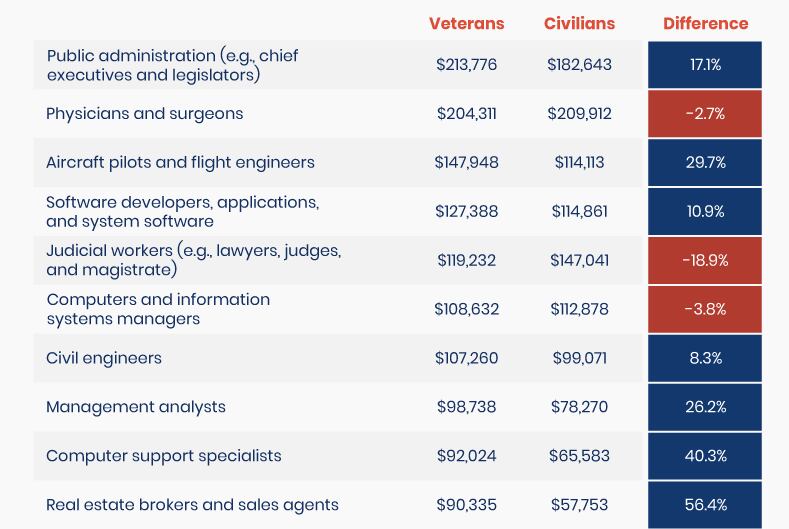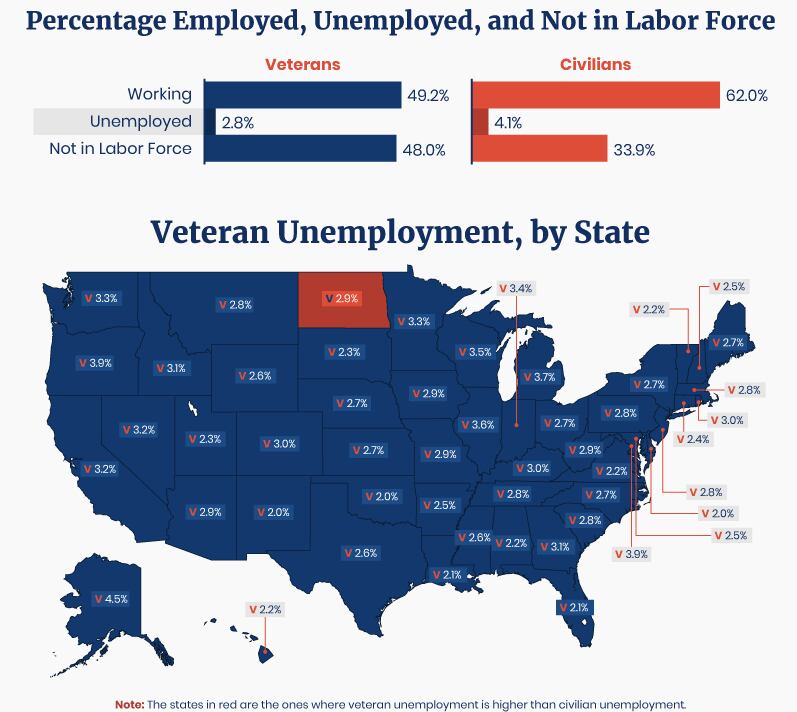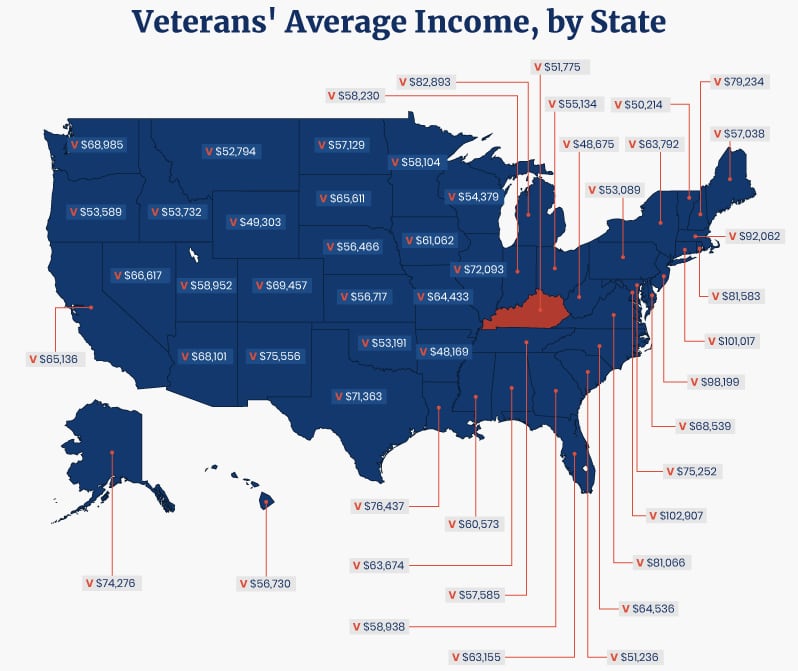It pays to be a veteran, according to a new study by veterans claims law firm Hill and Ponton.
The average annual income for veterans was about $65,000 in 2019, the study reported. Those who didn’t serve brought home nearly $11,000 less, with an average annual income of about $54,000.
Hill and Ponton’s study also analyzed the states and careers where veterans stood to gain the most, using 2019 census data from the Integrated Public Use Microdata Series to draw their conclusions.
Here’s what they found:
Best states for veterans’ salaries
The five locations where veterans made the most money in 2019 are Washington D.C. ($102,900), Connecticut ($101,000), New Jersey ($98,000), Massachusetts ($92,000) and Michigan ($82,900).
In Michigan, veterans stood to gain the most, with average salaries 64.9 percent higher than their civilian counterparts.
The only state in which veterans made less money than their civilian counterparts was Kentucky, where employees without prior service made an average of 3.9 percent more each year.
The five lowest paying states include Arkansas ($48,200), West Virginia ($48,700), Wyoming ($49,000), Vermont ($50,200) and South Carolina ($51,200).
Highest paying jobs for veterans
The study also measured the highest paying career fields for veterans as well as the disparity between veteran and civilian salaries in each field. For instance, the highest paying career fields for vets were public administration, physicians and surgeons, and aircraft pilots and flight engineers; however, these careers respectively offered only a 17.1 percent, -2.7 percent, and 29.7 percent advantage to veterans.

Careers as real estate brokers and agents, first-line supervisors of office and administrative employees and computer support specialists, while not as highly paid as the top jobs, gave veterans the greatest comparative advantage. Veterans in real estate made an average of 56.4 percent more than their civilian counterparts, and veterans working as supervisors or computer support specialists saw gains of 41 percent and 40.3 percent respectively.
Few careers offered veterans lower average salaries than civilians. Among them were judicial workers such as judges and lawyers (-18.9 percent), wholesale and manufacturing sales representatives (-6.5 percent), and accountants and auditors (-6.4 percent).
Unemployment

The best locations for veterans to find employment are New Mexico, Delaware, Oklahoma, Florida, and Louisiana. Meanwhile, Alaska, Oregon, Washington D.C., Michigan, and Illinois were the worst.
Overall, North Dakota is the only state where veterans had a higher rate of unemployment than civilians.
Unemployment statistics differ significantly between veterans and non-veterans, Hill and Ponton found. At the time of the study, the nearly 18 million veterans in the U.S. accounted for approximately 7 percent of the adult population.
Sixty-two percent of non-veterans were employed in 2019, 34 percent were not currently in the workforce, and nearly four percent were unemployed. Meanwhile, 49 percent of veterans were working, 48 percent were not in the workforce, and about 3 percent were unemployed.
Those who are not actively employed or seeking employment are considered out of the work force. This can include retirees, those with family responsibilities, those in prison, and those pursuing education.
More than five million veterans reported at least one disability, according to the IPUMS data, and 1.2 million veterans were living below the poverty line. Nearly 38,000 prior service members were homeless at the time of the study.
Gender pay gap
Hill and Ponton also found that the gender pay gap is lessened, albeit slightly, among employed veterans. Among non-veterans, men earn an average of $18,000 more than women. This difference shrank to about $16,000 when comparing the salaries of veterans.
Women who served in the military made the most money in Alaska, Maryland, Massachusetts, Georgia and Virginia. The gender pay gap was highest for veterans in states like Arizona, Michigan, and Louisiana, all of which had a more than 50 percent gap between male and female veterans.
The complete study on differences between veteran and civilian pay in the U.S. can be found on Hill and Ponton’s website.
Harm Venhuizen is an editorial intern at Military Times. He is studying political science and philosophy at Calvin University, where he's also in the Army ROTC program.




